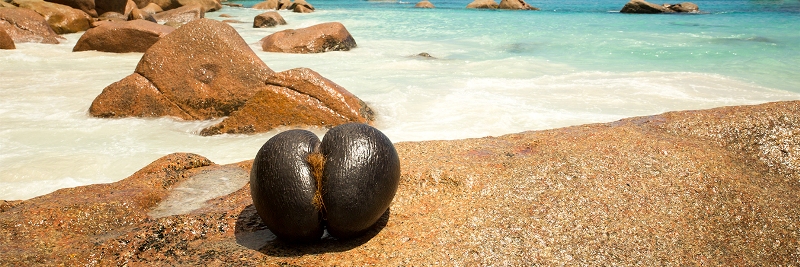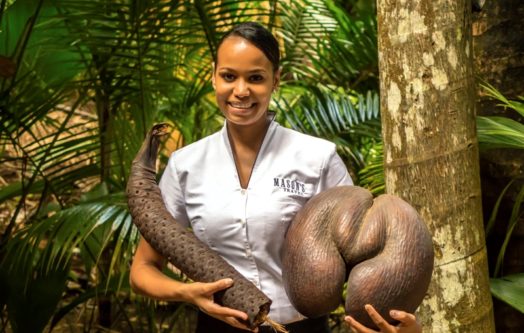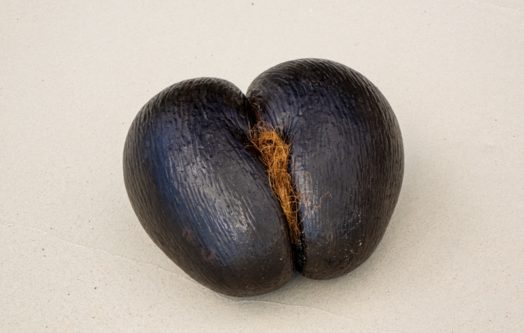he nut and tree of Seychelles’ iconic coco de mer have inspired many myths and legends over the years. This unique species of palm is endemic to Seychelles and produces the world’s largest seed (15 – 30 kg). Despite its considerable weight, the suggestively shaped

nut is known to have been carried by strong ocean currents when falling into the water, and was the cause of much bewilderment and speculation when they were found washed up on the beaches of distant islands or discovered floating by passing ships.
COCONUT OF THE SEA
Prior to the palm’s discovery on Praslin and Curieuse in 1734, it was widely believed that these nuts – shaped like a woman’s buttocks – were grown in underwater forests and possessed magical properties. This belief resulted in the nut being named “coco de mer” – coconut of the sea.
Malay mariners believed that aquatic forests of coco de mer were home to a mythical giant bird, named Garuda, which was capable of hunting lions and elephants and was known to prey on helpless survivors of shipwrecks.
Mystery surrounding these nuts, and their hypothesized healing powers (some believed the coco de mer to be an antidote to any poison), lead them to become very valuable. In Maldives, any nuts discovered automatically became the property of the king – with the penalty of death threatened against anyone found concealing or selling a coco de mer.


DISCOVERY OF THE GARDEN OF EDEN
After the terrestrial nature of these palms was discovered in the 18th century – together with the remarkably phallic-shaped flower stems of the male plant – rumours circulated that the trees would uproot themselves during stormy nights and join together to make love. The legend held that anyone who witnessed this botanical liaison would instantly go blind or be struck dead.
Perhaps the most famous myth surrounding the coco de mer was penned by General Charles George Gordon in 1881, when he visited current-day Vallée de Mai and wrote home proclaiming to have uncovered the original Garden of Eden, together with the Forbidden Fruit of the Tree of Knowledge of Good and Evil.
Today, coco de mers are protected, and can most famously be seen at the Vallée de Mai. Inter-island day trips and land transfers can be arranged to visit this mythical tree, and our knowledgeable guides are the best people to share the legend of Seychelles’ national plant. Contact Mason’s Travel today to book your coco de mer experience.
Submitted by Robyn Shield, Mason's Travel
Contact your Mason’s Travel Representative for rates and packages.
online.masonstravel.com | info@masonstravel.com | +248 428 8888
Connect with us:
KEEP IN TOUCH
Subscribe to our Newsletter
Mason’s Travel is the first and original inbound tour operator for the Seychelles and a leading name in travel for the Indian Ocean’s most alluring destination. With a reputation for deep local knowledge, wealth of experience and outstanding personal service, Mason’ Travel is the oldest and most established DMC in Seychelles.
CONTACT
Live the Seychelles Experience
Copyright 2022 - Mason's Travel

